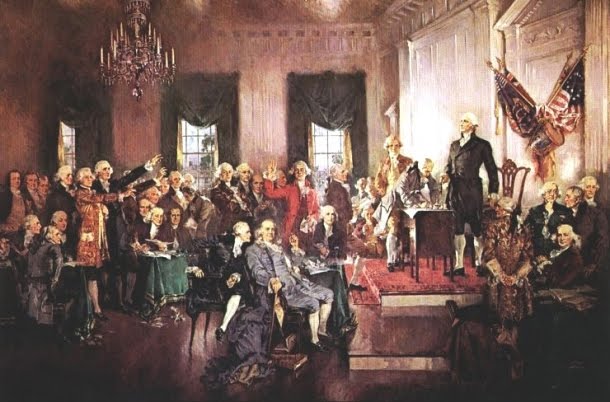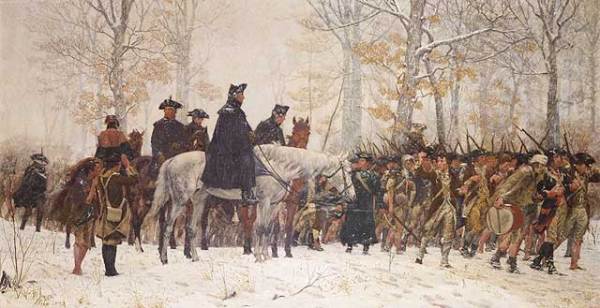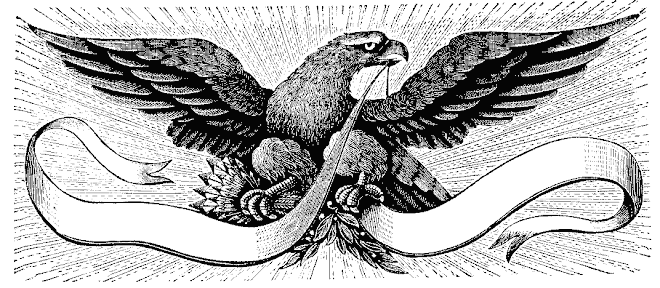From The American Thinker:
August 15, 2010
Back to the Classroom
By Emily Greenwood
Another conservative teacher here, stepping up to the plate! It has been good recently to see teachers speaking up on American Thinker. I believe that our public education system will not be repaired until teachers speak truthfully and publicly about their own classrooms. Like the ICE union members, they must protest the travesty that has been made of their calling.
How bad are public schools? Much worse than most people realize. So bad that they blight the futures of the young people in them. So bad that if we don't turn back the clock to real education, we will most certainly lose our republic.
It is a sad irony that of the various damaged institutions weighing down our country today -- the courts, the media, the universities, and so on -- schools, perhaps the most ravaged, are also the closest to the people. Everyone knows a student, most people know a teacher, and most people have been students and are currently paying for schools. Yet in spite of this and in spite of local school boards that nominally control schools, the citizens are buffaloed, dominated, and tied up in knots by regimes of education experts -- credentialed morons -- at the state and federal level and in the universities.
But as Michael Ledeen wrote recently about the political scene in general, the fight is on: "We're fighting back against the revenge of the intellectuals (it's the nucleus of the tea party movement); we know that if our children are to have it better than we do, we're going to have to fight for it. And Americans love a good fight."
It's a propitious time to take the citizens' revolt to the public schools. We face budget crises on state, federal, and local levels. And our schools are at a tipping point of dysfunction. Just a little worse, and they will simply disintegrate.
Hyperbole? Who will prove me wrong? Certainly students are voting with their feet and failing to graduate. Public school management by intellectuals has failed, starting in about 1979, when the federal Department of Education was founded. School used to be taught, and very well, too, by young people with a high school education, when a high school education still meant something, or a few years at a teachers' college. It is not for the intellectuals or the government to define what public education should be. It should be what the ordinary citizens of the community want it to be. People who do not have a Ph.D. in education have a right to be heard and a duty to speak up for their ideas.
I dread going back to school in two weeks. This article began as a note in my idea file that simply said, "Teaching sucks." I like children. I even find most young people on the high school level, where I teach, to be full of goodness, potential, and curiosity, with a remarkable ability to learn and to invent and reinvent themselves. And I am most grateful to have a job in these times and to have had time off in the summer, though this year, most of it was spent taking required education courses. I dread going back because our school does such a downright miserable job, and none of our real problems ever seem to get fixed.
I am writing this article because of a "eureka moment" in one of those online classes, when, amazingly, the professor went completely off-topic and wrote a small rant against whole language and for phonics-based reading instruction. My amazement that someone teaching at a university level was actually advocating a reading approach that works made me think about phonics versus whole language for the first time in years, and I realized that the difference it makes amounts to even more than learning or not learning to read. The difference is also in the way the classroom functions, in the character traits that students are asked to develop and practice, and in the intrinsic rewards to students.
Whole language, of course (based on ideas from Noam Chomsky, surprise surprise!), is the reading method, only now being reversed, that had children trying to intuit how to read by looking at and listening to words and stories without instruction in the rules of phonics. It went along with similar approaches in math, with students expected to discover the rules of math. It was all very touchy-feely, and it worked -- and is working -- very poorly in conveying reading and math skills to children. I believe that these methods are also devastating to children's attitudes about school -- they must feel like failures -- and to their overall study and classroom skills.
I've ordered Ramona the Brave, by Beverly Cleary, about Ramona starting first grade, hoping that it paints a bright, clear picture of first grade in the 1950s. My own first grade experience, in a traditional public school classroom, began in 1961, and it was the most intense academic experience of my life. I ended up with a big bump on my middle finger, which I still have, from holding the pencil so hard. We sat quietly in rows. The teacher was tall, grouchy, intimidating, and smelled like mothballs. I was intensely competitive, paying attention with all my might to do as well as Billy A., the smartest boy in the class, who sat next to me and never broke a sweat. For a while I was in a lower reading group, but finally I was moved to the top group. We learned phonics rules every day, with the teacher lecturing and showing us flashcards and all of us practicing; we read aloud in reading groups every day; we learned how to count using toothpicks; we learned how to add; we learned how to write letters and numbers; and in the midst of all of this hard work we had art, music, gym, recess, lunch, and snack breaks.
By the end of first grade, we could read. By the end of third grade, we were reading chapter books, we were adding, subtracting, multiplying, and dividing, and we knew our multiplication tables by heart. We also knew quite a bit about American history and a little bit about science. We went home at the end of every school day -- and certainly at the end of the school year -- full of pride, confidence, and a sense of accomplishment.
Functioning in a classroom like that took teamwork and self-control. It was these qualities primarily that were taught in kindergarten, I think. By the time we got to first grade, we could do it. The teacher was our coach, and we were the team. High school in the 1970s was not much different. I remember only one class in which students talked out of turn -- a Latin class taught by an elderly teacher who didn't bother to enforce discipline -- and it made it harder to learn.
Fast-forward to 2010, a community with similar demographics to the what I experienced in school. But you already know this part of the story, right? There is a dress code against showing navels, cleavage, and buttocks, indifferently enforced. Otherwise, the students -- and teachers -- are free to wear rags of all kinds. Teachers no longer have the power to give detentions. Instead, they must refer the unruly to the principal or vice principal for discipline. Sometimes it is meted out, sometimes not. Rude and disruptive students are returned to the classroom again and again. The classroom is a place for the students to relax and feel comfortable. They eat and drink at will, they leave for bathroom (or drug-dealing) breaks throughout the class, they text their friends, they listen to their mp3 players. This does make it difficult to hear what the teacher is saying.
Students who fail because they don't turn in homework or projects are given more time to complete the work. Ability grouping is a thing of the past. Teachers and students are expected to function in classrooms with students who read from the third- or fourth-grade level all the way to highly gifted students, not to mention students with special needs and Individualized Educational Plans. High school students are unable to do simple percentage calculations without a calculator. They have no idea in which century slavery ended, in which century queen Elizabeth I lived, or who the main combatants in World War I were. Some of these students will be able to function in a workplace or in continuing education of some kind after "graduation," but many will not.
The classroom today, as always, is in the heart of the storm, impinged upon by families, the school establishment (itself defined by the teachers' unions, the university education departments, and the state and federal education bureaucracies), and the culture at large. We know plenty about the school establishment. On that, I will remark only that it is high time for teachers to speak for themselves rather than deferring to the unions and to start engaging on educational issues beyond their own pocketbooks.
Teachers often complain about the families of their students, and they do have a point. Our high school students, and in many cases our younger students, too, are under more emotional stress than ever, largely because of family disarray. We do have a higher divorce rate and more single parents than ever -- certainly much more than forty years ago -- and anyone who knows children can tell you that they pay a high emotional price for growing up without a father, or in a combined family, or in a house with a constant parade of mother's new boyfriends. The sexualization of ever-younger children causes great emotional stress as well. How should a school respond to students in emotional pain?
I believe that some response is needed, and there are good options, ranging from individual counseling to group discussions about life issues in health classes or in character education programs. But unhappy students can no longer be allowed to undermine the education of everyone else by taking over and disrupting the classroom. Much of the time, the classroom must be a workplace, just as it was for Ramona Quimby. In addition, there is good research showing that students from chaotic homes who attend elementary school in a structured environment with clear expectations, in grades one through three, do learn to adapt to the school environment and to behave appropriately.
I suspect that much of the disruptive behavior we see now from our students could have been nipped in the bud by more traditional, demanding elementary school settings.
The culture, of course, influences all of us. At the moment, the education establishment is fully embracing "technology." Educators are certainly much influenced by marketing from the hardware and software companies. We are led to believe that students must have access to computers, to iPods, to iPhones, and so on in order to be engaged and excited about education. In addition, they must learn to produce output in the form of podcasts, computer slide shows, and movies in order to be fully educated. Actually, too often today, tinkering with computers is taking the place of more fundamental work. There is more and more evidence that our obsession with electronics is not only reducing reading time and ability, but also radically reducing attention spans.
The best books about education that I know are Real Education by Charles Murray and The Schools We Need and Why We Don't Have Them by E.D. Hirsch.
These are books that speak to intellectuals and ordinary citizens alike and lay out our fundamental education problems along with some solutions.
There is a third book I'd like to read that hasn't been written yet -- this is the book about the community that took back its school system. How much could a determined group of reformers do? How much money could be saved? Enough to forgo federal funding (sometimes half of a school budget) and the strings that come with it? Enough to forgo state funding?
A functioning high school could be created in two ways: by going "back to the future" to, say, 1970, or by fast-forwarding to an entirely computerized curriculum. A 1970-style school would require teachers empowered to impose discipline, a dress code, school as a strict electronics-free zone -- no mp3 players or cell phones -- and ability grouping in the core academic subjects, just for starters. The students would have to learn the discipline of the true classroom again: a class as a team, with the teacher as coach.
A computerized high school curriculum would be much better than what we have now. There are many curricula on the market, for virtual schools and home-schoolers. The high school would be converted to a series of computer labs (good little laptops are now available for about $300 each). Classes could be large, and the teachers would keep order and answer questions. The students would not be required to improve their social or classroom skills, only to plug in their earbuds and look at the screen. A positive aspect of an individualized, computerized curriculum is that students work at their own level and their own pace. (This is a good way to learn, and it is the lack of appropriate work in the current setup that causes much of the classroom disruption.) Computer lab time would be varied with the usual art, music, gym, shop, cooking, and other hands-on classes.
Meanwhile, the elementary school, starting with kindergarten and grades one through three, should go "back to the future" to the time of Ramona, with students learning phonics, learning calculator-free math, and learning to be part of a self-disciplined classroom. The young elementary teachers from the 1960s are in their seventies now. Maybe some of them could come back to show the rest of us how it's done.
Do I sound like a Luddite? Who am I to make recommendations about structuring our schools? I do have a Masters and various other degrees, but not one Ph.D. Well, I am a citizen, I am a former student, I am a parent, and I am fed up. I am asserting, in 2010, that those are all the credentials I -- or you -- need to think and to act about educating our children.
Emily Greenwood is the pen name of a teacher.










No comments:
Post a Comment